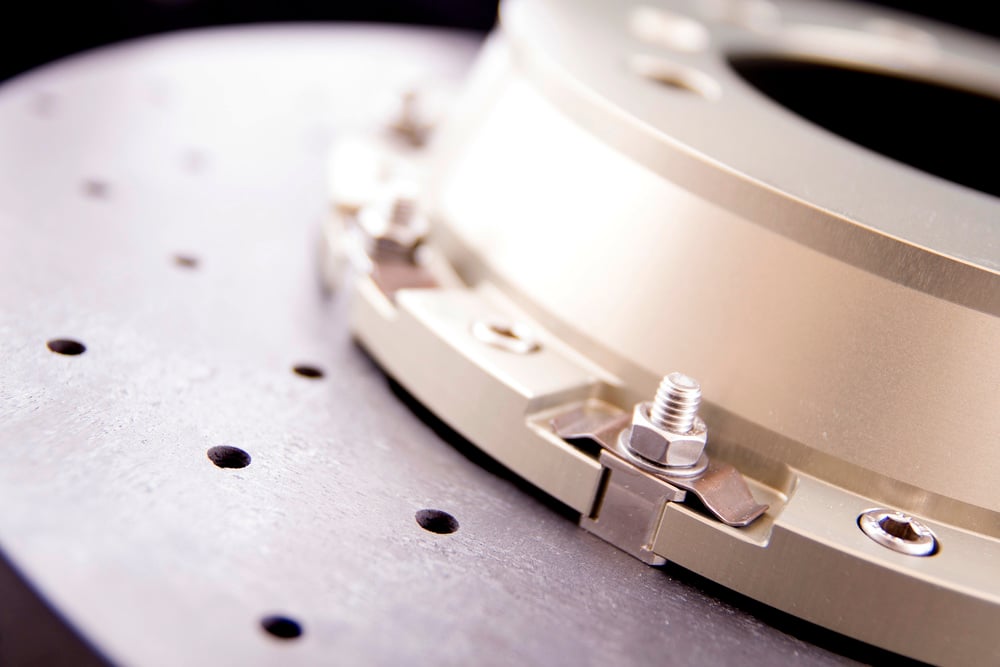Surface Transforms plc (LON:SCE), manufacturers of carbon fibre reinforced ceramic brake discs, has today announced that it has been notified of its selection as a tier one supplier of a carbon ceramic brake disc to its existing mainstream customer described previously as OEM 5. Prototype orders have been received and are being fulfilled. All terms and conditions have been carried over from the master purchase agreement with this customer signed in mid 2019.
The car is a facelift to an existing internal combustion engine model with start of production in Q1 2024 and the Company’s brake discs will be fitted as an option to the front axle. The lifetime value of the contract is expected to be approximately €5 million spread over the 5 years from 2024 to 2028.
The contract will not have a significant impact on Surface Transforms production capacity and was part of the expectations outlined during the February 2021 fund raising. However, separately, the Company has been reviewing its manufacturing capacity strategy with a view to both reducing timescales and costs and a separate announcement is being made today on that subject.
Kevin Johnson, CEO, commented:
“The significance of this relatively small contract lies in it being the first example of the implementation of the multi-year “carry over” agreement concluded with OEM 5 at the time of the initial contract award in July 2019. This envisaged further awards, of varying sizes, over several years. A further award in 2020 did not happen because of a Covid induced programme cancellation by the customer. It is good to be now back on track. The engineers in both companies are now working on the next vehicle brake disc that is available for award over the next year. We are greatly enjoying working with this customer and look forward to further deepening our relationship.”
Surface Transforms also announced that, following internal analysis and extensive discussions with its furnace supplier partners, it is updating its manufacturing strategy which will have the effect of:
· saving approximately £10 million in equipping the entire Knowsley factory
· increasing 2023 sales capacity by £15 million p.a. from £35 million p.a. to £50 million p.a. with no new capital equipment cash requirement
· reducing implementation time for equipping the entire factory by approximately 18 months
· significantly increasing capacity implementation flexibility beyond 2022 as the business grows over the next 2 to 3 years
· reducing Surface Transforms’ projected carbon footprint using more environmentally friendly furnace technology
By way of background, the Company has until now, had the strategy of equipping the Knowsley factory in a series of five modular, relatively independent but identical production cells, being built at one cell roughly every 18 months at a cost of approximately £10 million per cell. Cell One is complete. The Company raised £20 million in February 2021 to equip Cell Two and to provide additional working capital enabling site capacity for £35 million sales when complete in early 2023.
Following the fund raise, the Company and its furnace supplier partners examined the options for building not just Cell Two but also ensuring that the factory will have the required level of equipment over the next few years. The Board subsequently concluded that improvements could be made to the previous manufacturing strategy, noting that:
· The primary objective remains to ultimately provide a factory with sales capacity of £75 million p.a.
· However, the Company will no longer build separate production cells but approach the project as a plant-wide “single production line” project
· This includes seeing the procurement of the furnaces (about two thirds of the cost and all the lead time) as being very different from that of the machine tools and other equipment
· Following advice from the furnace suppliers and internal evaluation the Company will now procure a smaller number of larger furnaces to support the sales capacity target for the Knowsley factory of £75 million p.a.
· The immediate effect is to raise the 2023 capacity availability from the fundraising projection of £35 million p.a. sales to £50 million p.a. sales with no impact on the 2022 cash requirement
· The procurement of the other machine tools is now in “buckets” of circa £5 million p.a. capacity (previously circa £15 million p.a.) giving the Company shorter lead times and greater flexibility to deal with shorter lead time customer requests that we have seen more recently from some customers. It should also be possible to asset finance a large proportion of the machine tool purchases as the Company moves into profitability
· The nearer term additional production capacity that this new strategy provides means the Company can await contract awards before needing to buy further furnaces to increase sales from £50 million to £75 million
· During the fund raise the Company stated that it expected it would cost approximately £50 million to provide sales capacity of £75 million p.a. of which £10 million had been spent and the fund raise included £10 million for Cell Two capital equipment. This total requirement is now reduced to £40 million, a saving of £10 million
· Working capital cash needs remain unchanged. This announcement only impacts capital expenditure
Upon completion of this project there will no longer be any self-contained complete production cells in Knowsley. The technologies will be grouped together, and work-in-progress will flow from one technology to the next in a lean environment. The machines in the current SVP Cell and production Cell One will be moved to the appropriate new location in the new factory layout.
Kevin Johnson, CEO, commented:
“At the time of the fund raising we said that we thought there could be sufficient demand to fill the Knowsley factory by 2025, albeit the sales were then, and are still now, only partially contracted. Our continuing discussions with existing and potential customers together with increasingly encouraging test results have not only lifted our confidence in this view but led us to the conclusion that we may require this capacity by 2024. This new manufacturing strategy will achieve the primary capacity objective with the added benefit of reducing overall capital expenditure. There are numerous positive cash implications, and we continue to work with our customers to convert the significant number of active projects into firm agreements to fill this capacity.”






































